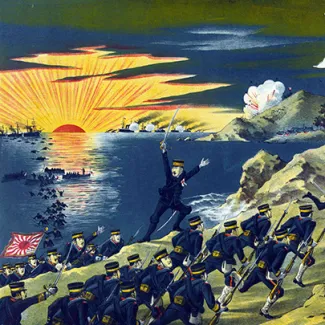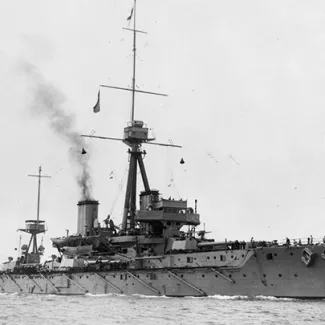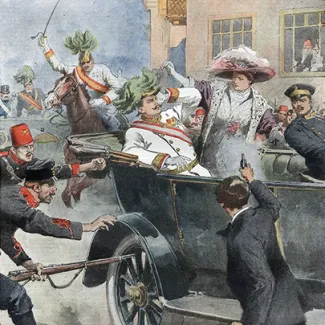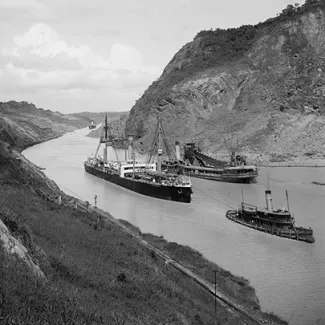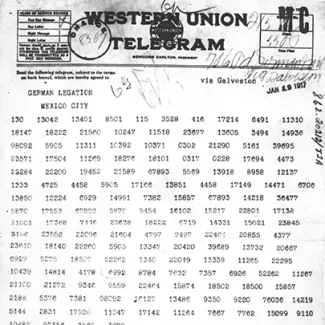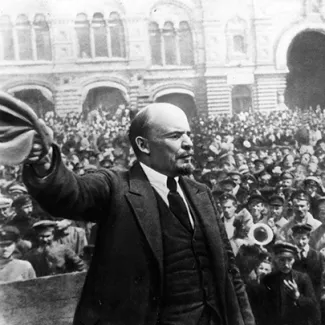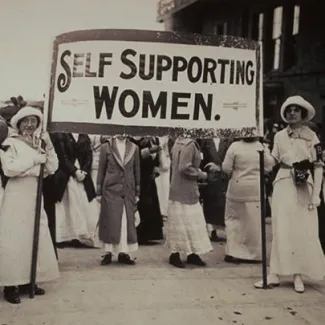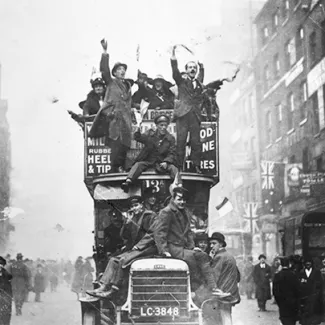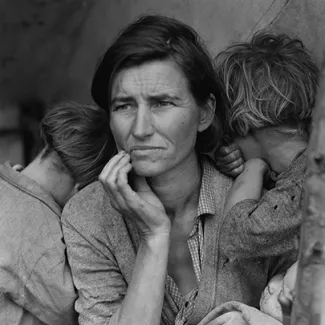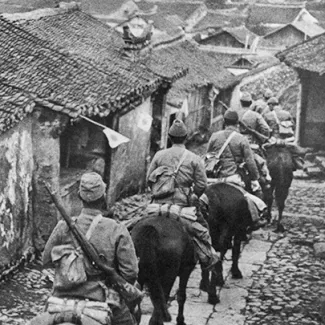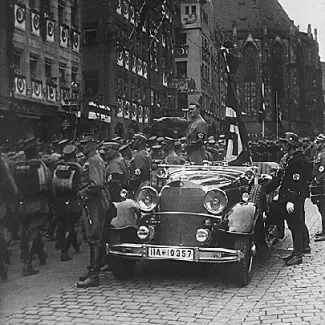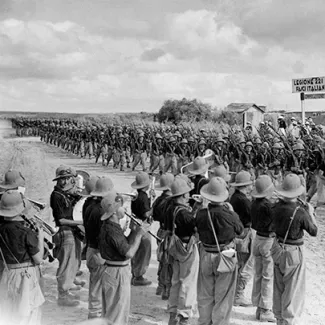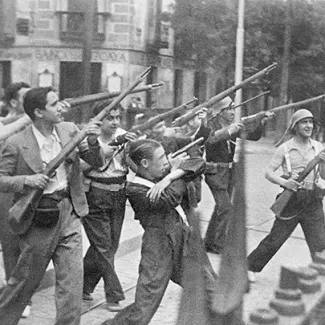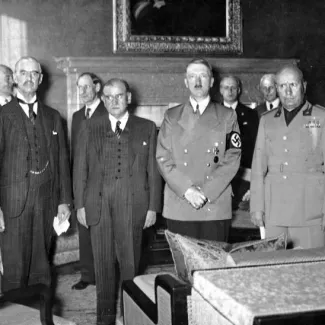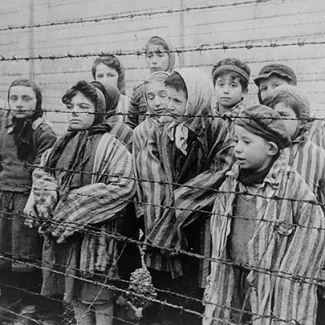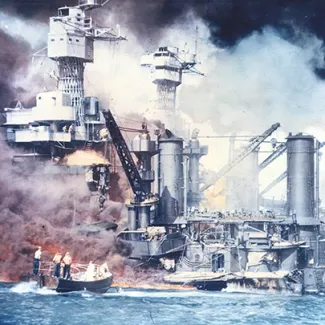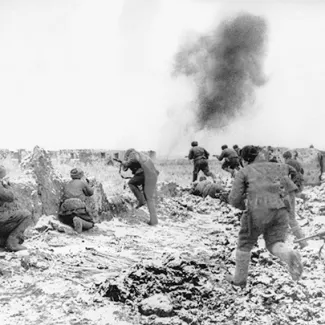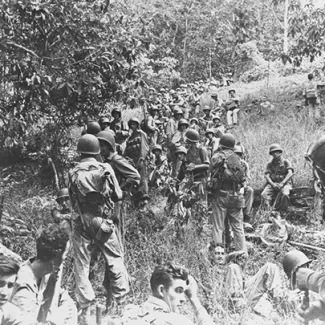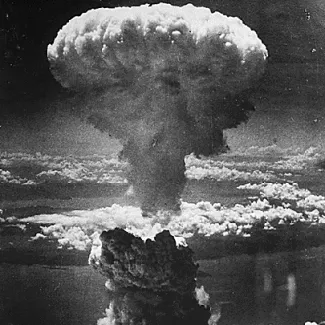Contemporary History World at War: Introduction
Essential Events Between 1900 and 1945
Learn how two world wars and other major historical developments from the Spanish-American War to World War II reshaped global affairs in the first half of the twentieth century.
Last Updated
October 21, 2022
World History Timeline: 1898–1945
1898
1898
1898
Spanish-American War Signals Growing U.S. Ambition on World Stage
1905
Spanish-American War Signals Growing U.S. Ambition on World Stage
1905
Japan Gains International Reputation With Victory in Russo-Japanese War
1906
Japan Gains International Reputation With Victory in Russo-Japanese War
1906
Launch of HMS Dreadnought Sparks Arms Race
Jun 28, 1914
Launch of HMS Dreadnought Sparks Arms Race
Jun 28, 1914
Assassination of Archduke Franz Ferdinand Ignites World War I
Aug 15, 1914
Assassination of Archduke Franz Ferdinand Ignites World War I
Aug 15, 1914
Panama Canal Transforms U.S. and Global Economy
Apr 1, 1915
- May 31, 1915
Panama Canal Transforms U.S. and Global Economy
Apr 1, 1915
- May 31, 1915
Second Battle of Ypres Introduces World to Large-Scale Chemical Warfare
May 16, 1916
Second Battle of Ypres Introduces World to Large-Scale Chemical Warfare
May 16, 1916
Sykes-Picot Agreement Leads to Ottoman Empire Break Up
Jan 1, 1917
Sykes-Picot Agreement Leads to Ottoman Empire Break Up
Jan 1, 1917
Zimmerman Telegram Helps to Push United States into World War I
Nov 7, 1917
Zimmerman Telegram Helps to Push United States into World War I
Nov 7, 1917
Bolshevik Revolution Leads to Birth of Soviet Union
1917
- 1920
Bolshevik Revolution Leads to Birth of Soviet Union
1917
- 1920
World War I Influences Suffrage Movement Successes
Nov 11, 1918
World War I Influences Suffrage Movement Successes
Nov 11, 1918
Armistice Day Marks Close of ‘War to End All Wars’
Jan 12, 1919
Armistice Day Marks Close of ‘War to End All Wars’
Jan 12, 1919
Paris Peace Conference Leads to League of Nations, Embittered Germany
1929
- 1939
Paris Peace Conference Leads to League of Nations, Embittered Germany
1929
- 1939
Great Depression Creates Pre-Conditions for World War II
Sep 18, 1931
Great Depression Creates Pre-Conditions for World War II
Sep 18, 1931
Invasion of Manchuria Signals Japanese Expansion
Jan 30, 1933
Invasion of Manchuria Signals Japanese Expansion
Jan 30, 1933
Hitler Named Chancellor as German Economic Situation Worsens
Oct 3, 1935
Hitler Named Chancellor as German Economic Situation Worsens
Oct 3, 1935
Second Italo-Ethiopian War Demonstrates League of Nations’ Ineffectiveness
1936
Second Italo-Ethiopian War Demonstrates League of Nations’ Ineffectiveness
1936
Spanish Civil War Provides Dress Rehearsal for World War II
Sep 1, 1938
Spanish Civil War Provides Dress Rehearsal for World War II
Sep 1, 1938
Britain, France Appease Aggressive Germany at Munich Conference
May 1, 1940
- Jun 1, 1941
Britain, France Appease Aggressive Germany at Munich Conference
May 1, 1940
- Jun 1, 1941
With Eastern Europe Occupied, Nazis Decimate Western Europe
1941
- 1945
With Eastern Europe Occupied, Nazis Decimate Western Europe
1941
- 1945
The Holocaust—Nazi Germany’s Systematic Mass Murder Campaign
Dec 7, 1941
The Holocaust—Nazi Germany’s Systematic Mass Murder Campaign
Dec 7, 1941
Japan’s Attack on Pearl Harbor Brings United States Into World War II
Jul 1, 1942
- Feb 1, 1943
Japan’s Attack on Pearl Harbor Brings United States Into World War II
Jul 1, 1942
- Feb 1, 1943
Battle of Stalingrad Signals Beginning of End for Germany
Aug 1, 1942
- Feb 1, 1943
Battle of Stalingrad Signals Beginning of End for Germany
Aug 1, 1942
- Feb 1, 1943
Battle of Guadalcanal a Turning Point in Pacific
Jun 6, 1944
Battle of Guadalcanal a Turning Point in Pacific
Jun 6, 1944
Invasion of Normandy Begins World War II’s Final Act
Aug 1, 1945
Invasion of Normandy Begins World War II’s Final Act
Aug 1, 1945
Atomic Bombs Bring World War II to an End
Atomic Bombs Bring World War II to an End
Aug 1, 1945

